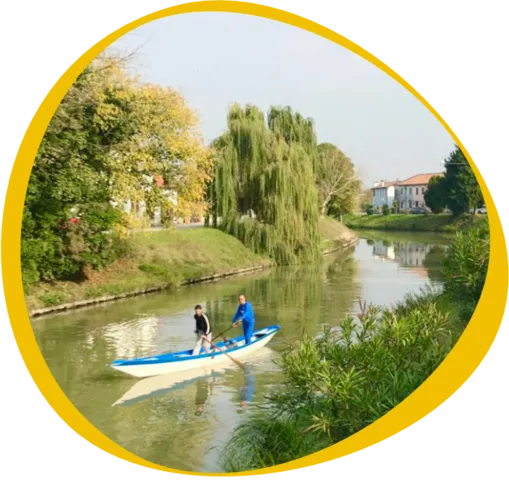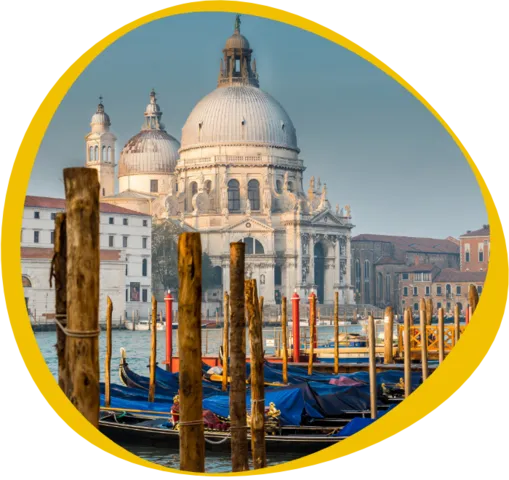Attractions
THE BRENTA AND THE NAVIGLIO
The Brenta and the Naviglio
The Brenta, formerly called Medoacus, is one of the most important navigable rivers in northern Italy and flows for about 174 km in the Trentino-Alto Adige and Veneto regions. It originates in the province of Trento from the union of the outfalls of the lakes of Levico and Caldonazzo, and in Stra it takes two "roads": the artificial stretch dug at the beginning of the twentieth century that takes it south of Chioggia, and the ancient one that today we call Naviglio del Brenta, which flows directly into the Venice Lagoon at Fusina, crossing the Riviera del Brenta.
Over the past centuries, the river underwent various changes, mainly due to numerous and severe floods. The terrible floods of the Brenta (the so-called "Brentane") began to become a serious problem as the debris carried by the river threatened, along with fresh water, the Lagoon itself and its ecosystem.
Lo and behold, the Republic of Venice implemented measures to avoid such problems by digging numerous detour and implementing extraordinary works to secure and strengthen the embankments.
As mentioned, it was not until the early twentieth century that the Brenta's impetuousness was finally tamed thanks to further maintenance works.
Along the Naviglio del Brenta, water regulation was also concerned with the need to safeguard the passenger transport service with the Burchiello, which ran from Venice to the Brenta Riviera and the Piovego Canal as far as Padua.
The Burchiello was a wooden boat with an elegant cabin in the center with three or four balconies, finely furnished and decorated with mirrors and precious carvings.
The use of these boats spread as the mainland possessions of Venetian nobles expanded and they preferred the comfortable Burchiello to uncomfortable carriage rides.
The boat departed from Venice near St. Mark's Square, rowed or sailed the lagoon stretch to Fusina, where the customs house was, and arrived in Padua pulled by horses. It was a not particularly expensive means of transport, especially on night voyages, and guaranteed to reach Padua, or Venice on the return, in almost a day.
Numerous famous people employed the Burchiello and extolled its service in poems and various writings; these include Carlo Goldoni, Michel de Montaigne, Giacomo Casanova, Lord Byron, Wolfgang Goethe, and Gabriele D'Annunzio.
By bicycle, we ride the stretch parallel to the Naviglio del Brenta: just as the palaces in Venice overlook the Grand Canal, so in Riviera del Brenta the splendid Villas show themselves on the river to represent the ideal continuation of Venice on the mainland.
We will pedal along the river until we reach Malcontenta and then Fusina, encountering: Villa Foscari, the only work of the famous architect Andrea Palladio on the Brenta Riviera; it is a 16th-century jewel still owned by the descendants of the noble Venetian family; and the locality of Moranzani close to the lagoon where in the 17th century one of the locks that regulated the imposing flow of the Brenta was built.
From here the water was exploited to carry out various activities related to the trade of the Serenissima: from the collection of duties for passing boats, to washing wool in special tanks, to the work of the water-workers who retrieved fresh water from the Seriola canal to take to Venice; the locality of Fusina, from which there is a wonderful view of the Venice Lagoon and the bell tower of St. Mark's!
Nowadays, boats to and from Venice and some of its islands arrive and depart at Fusina; in ancient times it represented an important gateway to the mainland.
It is always the river that is our point of reference for the return trip.




